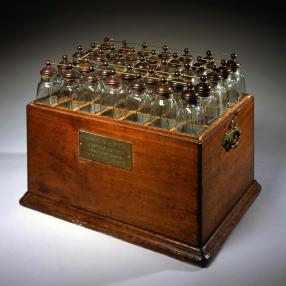1. How is what you are doing different from what the original Benjamin Franklin did in June 1752?
He also captured power from a storm and held it in a Leyden jar.
He also invented what he called a battery, banks of Leyden jars, so that he could store more power.

I would check out his patents if I were you.
You might be 260 years late
Knowing Benj, he'd have had a saying about it.
Something like "A patent made early, makes your competitor surly" or
"File your patent in time. They're screwed! drink some wine"
One thing that this thread has done for me. Thank you Benny F.
I'm now a huge fan of the original Benjamin Franklin.
He's the American Leonardo.
2. Why don't you make your own leyden jars out of old discarded plastic pop bottles.
You can make one like this for a few pence.

I bet they pack a punch, and I bet they are cheaper per unit energy than anything you can buy.
Get a bank of them, and it'll blow your bloody arm off. (Mods. Can I say hopefully without getting barred?)
http://blog.makezine.com/archive/2008/02/homemade_capacitor_leyden.html
He also captured power from a storm and held it in a Leyden jar.
He also invented what he called a battery, banks of Leyden jars, so that he could store more power.

I would check out his patents if I were you.
You might be 260 years late
Knowing Benj, he'd have had a saying about it.
Something like "A patent made early, makes your competitor surly" or
"File your patent in time. They're screwed! drink some wine"
One thing that this thread has done for me. Thank you Benny F.
I'm now a huge fan of the original Benjamin Franklin.
He's the American Leonardo.
2. Why don't you make your own leyden jars out of old discarded plastic pop bottles.
You can make one like this for a few pence.

I bet they pack a punch, and I bet they are cheaper per unit energy than anything you can buy.
Get a bank of them, and it'll blow your bloody arm off. (Mods. Can I say hopefully without getting barred?)
http://blog.makezine.com/archive/2008/02/homemade_capacitor_leyden.html
Last edited:

